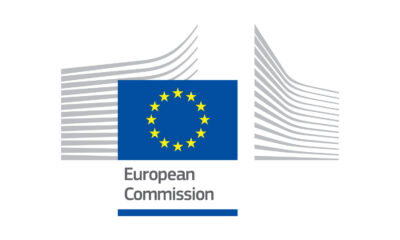Travel
Airspace closures, staff shortages and ageing tech: What’s behind 2023’s air traffic disruption?
2023 has been a disruptive year for air traffic control in Europe. Why is this, and will it continue into 2024?
We all appreciate the pilots who fly us safely to our destination. Some of us even clap for them on landing – much to the chagrin of fellow travellers.
But what about the hidden heroes guiding our safe path through the skies?
Air traffic control officers do the difficult job of keeping planes from crashing. Yet most of us had never even heard of them until they sparked travel chaos by going on strike this year.
When you know what it takes to become an officer, and the high stakes nature of their job, it’s easier to understand their demands for good working conditions and pay.
So what exactly is air traffic control, how do you get a career in it, and why has it been linked to so much travel disruption over the past year?
To find out what’s really behind Europe’s air traffic control problems and what it will take to fix them, Euronews Travel spoke to industry bodies, union members and the European Commission.
What it takes to become an air traffic controller
Staff shortages drove much of this year’s airport disruption and strike action.
The pandemic is partly to blame. The financial strain, health restrictions, low air traffic and uncertainty it caused put training for many air traffic controllers on hold. Being able to manage lots of overlapping planes is a key part of the job – and that takes practise.
“Adequate on-the-job training was only possible again when traffic levels had increased sufficiently to create a challenging practice environment,” explains Johnny Pring, the manager of Europe policy and advocacy at CANSO (the Civil Air Navigation Services Organisation), a representative body of air traffic control providers.
It takes at least 2.5 years to train an air traffic control officer (ATCO).
Every controller goes through basic training, followed by specialised training in a specific expertise, such as Tower Control, Approach Surveillance or Area Control Surveillance. They must then progress to field training at the airfield they will eventually control.
Finally, they will complete on-the-job training with an ATCO who is qualified to provide it. At airports where traffic has seasonal peaks, simulators are used for training during less busy periods to help maintain competence.
As every airport varies in density and complexity, and part of the training is location specific, air traffic controllers cannot be easily transferred between different airports.
At Maastricht Airport’s Upper Area Control Centre (MUAC) in the Netherlands – one of the most complex and busiest in Europe – the training takes approximately three years, according to Eurocontrol, an international organisation that works to achieve safe and efficient air traffic management across Europe.
Strict regulations govern the whole process and mean that most parts of the training can only be led by qualified ATCs. This means there is limited capacity for training, and staff shortages squeeze this even further.
What is air traffic control, anyway?
Air traffic control helps aircraft to move safely and efficiently through the sky.
Controllers are in constant contact with pilots, giving them information and advice to make sure they take off and land safely and on time. They give the pilots permission to take off, approve the route they’ll take, and ensure that aircraft are kept a safe distance apart in the skies, tracking their progress as they go.
In the UK, aircraft in the airways system are handled by NATS (National Air Traffic Services) and overseen by the Civil Aviation Authority (CAA). Eurocontrol oversees air traffic management across the European Union.
Various Air Navigation Service Providers (ANSPs) – the employers of controllers – provide individual air traffic control at airports, which is specialised to each location. Controllers hand over to one another as an aircraft travels between different jurisdictions.
What’s behind the ATC strikes and why are some more disruptive than others?
From strikes to technical failures, it’s been a turbulent year for Europe’s air traffic controllers.
In spring, French air traffic controllers (ATCs) began a strike in solidarity against pension reforms. Then in September, London’s Gatwick Airport was forced to limit flights after its already depleted ATC team was struck with COVID-19.
At the time, easyJet chief executive Johan Lundgren blamed understaffing for the disruption, telling a British newspaper that the way the service is structured, run and regulated is in need of modernisation.
The problems show no sign of abating. Just last weekend, passengers at London’s Heathrow Airport faced delays and cancellations due to ATC staff shortages and strong winds. On the same day in France, ATC staff staged a walkout that lasted until Tuesday and led to further disruption for travellers.
So what’s with all the air traffic control strikes?
Why are air traffic controllers going on strike?
Firstly, the cost of living crisis has led workers in various sectors to strike over pay. Many ATC strikes have been called to demand wages that are in line with inflation.
Unions have also called for improved working conditions and support for providing a safe and efficient service for transport users – especially in light of persistent staff shortages.
Most recently, French ATCs have walked out over new legislation requiring them to register their intent to strike at least 48 hours in advance.
Tuesday’s action in France marked the 65th day of strikes by air traffic controllers since the start of the year.
French strikes are particularly disruptive as they also affect ‘overflights’ using French airspace.
“Countries have different approaches to how ATC strikes are regulated,” explains CANSO’s Pring.
“In certain countries (Italy, Greece and Spain), overflights are protected and the strikes only affect domestic traffic; in others, all flights are affected. This regulation is a matter for national governments.”
How is the pandemic still affecting Europe’s air traffic controllers?
The pandemic is beginning to feel like a distant memory. Flights in Europe are back to over 94 per cent of 2019 levels and tourism is booming. But for air traffic controllers, its legacy lives on.
ANSPs manage air traffic on behalf of companies or countries, and collect fees from airspace users. With flights grounded during COVID-19, their revenue plummeted. This forced many of them to make cost savings, such as cutting staff.
ANSPs operating under the Single European Sky (SES) – an EU initiative that seeks to improve their performance – are faced with further cost pressures. The SES sets targets for safety, environment, capacity and cost-efficiency.
While its 2023 assessment shows that Europe’s ANSPs met their cost-efficiency targets, it highlights that “for some Member States, achieving this was a result of not adequately investing in their post-pandemic capacity” – with knock-on effects for capacity targets. It is possible that this was a conscious choice to help cut costs in line with targets.
However, this is not the aim of the legislation.
Why are ANSPs so heavily regulated?
As IATA – the trade association for the world’s airlines – explains, “Airports and air navigation services providers (ANSPs) are, for the most part, natural monopolies.” This means strong regulation is needed to ensure they do not raise their prices arbitrarily. It also aims to ensure they improve their services and maintain efficiency.
“In effect, the aim of the Single European Sky framework is to encourage monopolies to make the necessary investments with a view to being able to provide sufficient capacity and meet their performance targets,” explains Deborah Almerge Rückert, press officer for Transport and Mobility at the European Commission.
“Such investments could include training and hiring of staff, upgrading to newer systems, rollout of new technologies, radars and so on.”
All stakeholders, including ANSPs, airlines and professional staff organisations, are consulted when setting the performance targets, she adds, with differing views being taken into account.
In the UK, the Civil Aviation Authority (CAA) regulates air traffic control. It has recently approved a hike in prices to enable the provider to recover the costs lost during COVID-19. This will see the average cost of UK air traffic services rise by around £0.43 (€0.49) to around £2.08 (€2.39) per passenger per flight by 2027.
With air traffic now increasing, ANSPs are under pressure to hire more staff. However, since they are prevented from making a profit under rules established by the United Nations’ International Civil Aviation Organization (ICAO), more work doesn’t mean higher profits.
Why do ANSPs struggle with recruitment?
ANSPs have found it difficult to recruit new ATCOs – a challenge being faced by the whole aviation industry, according to Pring. This partly stems from air traffic control being a very niche industry that lacks access to top talent.
As most ANSPs are civil service organisations, their staff have certain job security rights and tend to work until retirement – which is capped at age 60 in many European countries due to the high-pressure nature of the roles.
As the demand for air traffic control really took off in the 1980s, many of the industry’s experts are now coming to the end of their careers.
“Looking ahead, many ANSPs will have to address a retirement wave over the next decade,” adds Pring, which could worsen the situation significantly if action isn’t taken soon.
Currently, slow or non-replacement of ATCOs after retirement is common practice due to budget limitations.
How has the war in Ukraine impacted air traffic control?
Still reeling from the pandemic, ANSPs were hit with a new unknown: Russia’s invasion of Ukraine in February 2022.
“[This] has led to unprecedented [air] traffic volatility across Europe,” says Pring.
As a result ANSPs face uncertainty in long and short term planning. They have also encountered fresh challenges, as ATCs have to adapt to new traffic flows due to airspace closures resulting from the war.
The route extensions resulting from the closure of Ukrainian, Belarussian and Russian airspace to European traffic have also pushed ANSPs off course in meeting their Single European Sky environmental targets.
Air traffic delays fell in 2023
All this is not to say that the safety of air travel has been compromised in any way. As Pring notes, “Throughout the pandemic and the recovery, the ATM [air traffic management] industry continued to deliver safe and efficient flight operations.”
He even points to some operational successes in summer 2023. Air traffic flow management delays per flight fell by 18 per cent from 2.7 minutes per flight to 2.3 minutes, compared to 2022, excluding weather factors.
During NATO’s major military air exercise carried out over Germany in June, ANSPs successfully managed to keep travellers flying with fewer disruptions than expected. Only 12,474 flights were directly delayed out of a total 293,928, or 4 per cent of all flights.
So how can ANSPs build on this positive momentum?
How can Europe fix its air traffic control problems?
Lundgren may have been on the money when he said that the way air traffic control is structured, run and regulated is in need of modernisation.
“Dealing with the forecast increase in air traffic and the increasingly complex traffic mix will require investment in technology – increased digitalisation or automation – and people,” says Pring. “So this is a major focus for European ANSPs.”
In France, improvements are already in the pipeline. The country has scheduled a major overhaul of its air traffic control system in 2024, with thousands of flights to be cut while it is installed.
The EU’s Single European Sky targets also have a role to play.
“In setting the targets for the coming years, it is crucial to strike the right balance between cost efficiency (which determines what ANSPs can charge their airline customers) and capacity and environment,” says Pring.
“Only in this way will ANSPs have sufficient financial means to invest in the necessary resources – staff and infrastructure – to service their customers.”
This is not the only role the European Commission plays in helping with reforms.
“The Commission is working with Member States to reform ATCO training, which is unnecessarily long and complex,” says Almerge Rückert.
It also aims to improve network management and system resilience by “allowing ATCO mobility across borders and/or cross-border service provision to fill capacity gaps,” she adds.
Such reforms to the Single European Sky would not only help to make service provision more efficient, flexible and scalable, but “should also help reduce flight cancellations in the event of strikes.”
Euronews Travel reached out to French union SNCTA, Belgium’s Union Syndicale Bruxelles (USB), and the UK’s GATCO and Prospect but did not hear back.
Travel
New competitors could slash Channel Tunnel rail fare by 30 per cent in the next 15 years
In the next 15 years, passengers on the Channel Tunnel rail line could triple, while fares could fall by almost a third.
These are the findings of a new report conducted by consultancy Steer and commissioned by London St Pancras Highspeed, owner of the tracks and station serving the Channel Tunnel.
The study forecasts a rise in passenger numbers from the current level of 11 million a year to 35 million by 2040.
This anticipated growth, along with increased competition on the route, could drive fares down by up to 30 per cent, the analysis concludes.
Plans are already in motion to double the international passenger capacity at St Pancras. At present, it supports up to 1,800 international passengers per hour, but the operator wants to see this increased to as many as 5,000 passengers an hour.
To facilitate this, London St Pancras Highspeed and Eurotunnel are collaborating to shorten journey times, improve timetable coordination and introduce more frequent services. Modifications to the station itself include reconfiguring existing spaces and constructing new facilities to cope with more passengers.
Why can we expect Channel Tunnel fares to decrease?
The 30 per cent fare reduction is projected to come as a result of increased competition and the growth in demand for rail travel through the Channel Tunnel.
Currently, Eurostar is the sole operator on the Channel Tunnel route. As with any business existing in a monopoly, fares and pricing in the absence of competition become artificially inflated.
With new operators vying to get their trains on the route, more options will stimulate competition, naturally driving down prices.
There are also the economies of scale to consider. The expected growth in demand could mean the overall cost per passenger for operators will decrease. Fixed costs of train operation can be spread across a larger number of passengers, allowing companies to price their fares a little lower.
Adding to the potential for cheaper cross-channel rail connections are new financial incentives introduced by London St. Pancras Highspeed.
Under the International Growth Incentive Scheme, new and existing operators on the HS1 line can unlock rebates of £1 (€1.17) per additional passenger carried, which will be paid into a joint fund for marketing and growing passenger demand.
New services can attract discounts on the fees for using the line of up to 50 per cent in year one, 40 per cent in year two and 30 per cent in year three.
The report leans heavily into the shift in consumer behaviour and the move towards more sustainable travel options. As the passenger base increases, operators will be able to offer lower fares and compete more fairly with budget airline options.
Which train operators are bringing the competition to the Channel Tunnel
The Channel Tunnel has been open to competitors since 2010, but the high costs of launching services and acquiring trains to run the route have deterred new operators from competing.
Recent regulatory changes and the launch of incentives have seen a newfound interest in cross-channel rail services, and several operators have already thrown their hats in the ring to operate services.
The Virgin Group has stated a desire to launch cross-channel train services by 2029. Discussions are already underway for a fleet of trains to operate the service.
Competing for access is a Spanish-led consortium known as Evolyn. The company wants to launch high-speed services between London and Paris and has indicated it has reached an agreement with Alstom to purchase 12 high-speed trains for the service.
Also in the mix is a start-up called Gemini Trains. led by Lord Tony Berkeley, a British aristocrat and former Eurotunnel engineer. Gemini has applied for an operator’s license to service Paris, Strasbourg, Cologne, and Geneva with a fleet of 10 trains by 2029.
Most recently, Italian state railway Ferrovie dello Stato Italiane has been revealed to be studying cross-channel services and is working with Evolyn towards this goal.
Other operators have previously expressed an interest in open access to the Channel Tunnel. Deutsche Bahn showcased a high-speed train at London’s St Pancras in 2010, signaling its intent to connect London with destinations in Germany, such as Frankfurt and Cologne. However, it has not yet officially joined the bidding war for services.
Where could you go via the Channel Tunnel, and when?
While discussions are still at early stages, the proposed new competitors on Channel Tunnel services could open direct rail connections to many more European cities from London.
Paris is a key destination and will provide direct competition with Eurostar. Ferrovie, Virgin Group and Evolyn have all mentioned Paris services in their communications to date.
As well as this, Virgin wants to connect London with Amsterdam and Brussels, while Getlink wants to run services directly to German and Swiss cities, including Frankfurt, Cologne, Geneva, Zurich, and Milan.
Most of the companies are targeting a launch between 2029-2030. However, Evolyn is aiming for a more ambitious 2026 start, though this timeline may prove optimistic given the challenges of entering the market.
From finding space for storage and maintenance of trains to money for the purchase of the equipment itself, the barriers to entry remain high.
Positive signals were received in early April when the UK’s Office of Road and Rail concluded that Eurostar must provide access to new operators at Temple Mills depot, a significant hurdle for any new operator. It also said the fees on the HS1 line were too high at €30 per mile – the most expensive in Europe.
Virgin Group declared this to be “a green signal for competition,” although Eurostar maintains Temple Mills is at capacity and can’t support even one new operator.
New trains in the Channel Tunnel will take time, but increased competition will undoubtedly serve to lower prices for the traveling public.
In addition to lower fares, increased competition could significantly reduce the carbon footprint of travel as more passengers opt for this low-emission option. High-speed rail can reduce CO2 emissions by up to 90 per cent compared to flying.
Travel
Barcelona to create special selfie zone to curb tourist chaos at Sagrada Familia
In front of Barcelona’s Sagrada Familia, gaggles of tourists pose for selfies. They crowd the pavement before the famous Gaudí-designed basilica and even step into the road for a better angle.
This quest for an Instagram-worthy photo comes at the expense of residents’ daily lives.
For over a decade, locals have lambasted the crowds of visitors that obstruct the passage of pedestrians and hold up traffic around the religious site.
Barcelona city authorities have now unveiled plans to corral selfie-snapping visitors into a dedicated area to ease the congestion.
As one of Spain’s hotspot destinations, it is the latest measure from officials to regulate tourism in the city.
Sagrada Familia selfie space will ‘reconcile tourists and the neighbourhood’
Barcelona city council has announced it will construct a special zone beside the Sagrada Familia where visitors can take a breather – and a selfie – before entering the church.
The 6,200-square-metre ‘anteroom’ will be located between the Nativity façade of the basilica and Plaça Gaudí on Carrer de la Marina.
Until recently, Plaça Gaudí had been exploited by tourists for a TikTok trend that caused considerable disruption.
It involved visitors balancing their phones on metro escalators to film themselves while the iconic monument appeared in the background. The trend led to tourists clogging station exits and was eventually banned.
“The new project helps to resolve a space where it is difficult to reconcile uses between visitors to the temple and the neighbourhood,” the city council said in a press release.
Construction on the gathering zone is scheduled to begin after the summer and be finished by April 2026 to coincide with the 100th anniversary of Gaudí’s death.
The €2.7 million project is part of a wider €15.5 million plan to improve infrastructure and visitor management around the sacred site.
The Sagrada Familia attracts 4.7 million visitors a year and is the second most visited site in Spain, after the Alhambra in Granada.
‘Tourism needs to be serving the city’s model’
Now drawing 32 million visitors a year, Barcelona has previously introduced several measures to curb overtourism.
In 2024, the city launched a €44 million plan to regulate crowds in 16 tourist hotspots by deploying more cleaners and police officers to maintain order and safety.
Last July, the city abandoned its ‘Visit Barcelona’ slogan of 15 years in favour of the new ‘This is Barcelona’, marking a rebranding which shifts the destination away from mass tourism.
Barcelona has also pledged to ban short-term apartment rentals to tourists by 2028 and cap cruise ship disembarkations.
Speaking after the announcement last year, the city’s mayor Jaume Collboni said the decision came in response to the risk of Barcelona becoming a “theme park” devoid of residents.
“Tourism needs to be serving the city’s model, not the opposite,” he added.
Travel
You’ll need to book via app to visit these spectacular beaches in Sardinia this summer
One beach on the Italian island of Sardinia will only be accessible to visitors by booking through an app this summer.
Crescent-shaped Tuerredda beach has already been capping visitor numbers at 1,100 per day since 2020.
The new digital measure, expected to be in place by July, aims to ease the strain on local resources and infrastructure.
Many of Sardinia’s spectacular beaches are protected from overtourism with similar restrictions, with transgressors facing fines of up to €3,500.
The island’s coastline is renowned for its pristine stretches of sand and is frequently voted as one of the top places in Italy for a seaside holiday.
But it has also been suffering due to disrespectful visitor behaviour and overcrowding.
Here are all the places where the island has limited access or introduced regulations to safeguard its most popular beaches.
Spiaggia Rosa: €3,500 for stealing sand
The Spiaggia Rosa, located on the outlying Budelli island, draws thousands of tourists a day in summer to admire its magnificent pink sand. But visitors can only see the picturesque sands from a distance on a boat.
Because of the beach’s fame, it has been closed off to visitors since the mid-1990s after its coveted sand began to disappear. The local government took action after tourists were found to be smuggling kilos worth away as souvenirs.
Local authority regulations now mean walking on the beach will land you a €500 fine, while anyone caught stealing the sand will have to pay up to €3,500.
La Maddalena, Cala Coticcio and Cala Brigantina are capping visitor numbers
In the archipelago of La Maddalena, two beaches now have restricted access. Last year, only 60 people a day could visit Cala Coticcio and Cala Brigantina over the summer.
Travellers needed to book their slot online and pay €3 per person to access the beaches with a guide.
The visitor limit and access fee have not yet been announced this year, but visits will likely need to be booked by contacting a local guide directly like last year.
Several other beaches around the island now only allow access to a limited number of visitors.
In the north, Cala Brandinchi and Lu Impostu will limit numbers to 1,447 and 3,352 respectively between 1 June and 30 September. Visitors also need to book via the San Teodoro app or on the dedicated website.
At Cala Mariolu, 700 people are allowed per day between June and early November.
In Villasimius in the southeast, beachgoers heading to Punta Molentis, Riu Trottu and Portu Sa Ruxi are required to pay to access the car park. Each vehicle costs €10 with an additional €1 for each passenger. Cyclists and pedestrians pay €3.
Staff are stationed at car parks and beach access points to check tickets.
Beach towels banned on Pelosa beach
On the west coast, Stintino’s famed Pelosa beach is now only open to a limited number of visitors per day. A maximum of 1,500 people are allowed to access the beach daily. Last year, visitor numbers reached as many as 4,000 on some days.
Those looking to sunbathe on Pelosa beach need to book a ticket costing €3.50. Regulations also state that visitors can only use beach towels if they place mats underneath them, which trap less sand.
Ogliastra: Time limits for beachgoers
In Ogliastra on the east coast, 300 people a day are permitted on Cala Birìala and beachgoers who arrive by boat can only stay for 90 minutes.
Similarly, visitors to Cala dei Gabbiani are also capped at 300. Last year, visitors had to leave after two hours.
How is Italy clamping down on overtourism?
Sardinia joins several other popular tourist destinations that have introduced restrictions as a result of overcrowding.
Venice now has a booking system and fee to visit the city. In the Italian Riviera town of Portofino, tourists lingering too long and blocking streets face fines of €270.
-

 EU & the World6 days ago
EU & the World6 days agoWho Is Buying TikTok? What Might Happen to the App
-

 Politics6 days ago
Politics6 days agoWinners of 2025 EU prize for women innovators announced
-

 Health & Society6 days ago
Health & Society6 days agoHealing from Within – The Science Behind Anti-Inflammatory Diets
-

 EU & the World4 days ago
EU & the World4 days agoWhat Is World Health Day? Learn About the Observation
-

 Politics6 days ago
Politics6 days agoThe transformative power of AI
-

 Politics6 days ago
Politics6 days ago6 tips to spot and stop information manipulation
-

 EU & the World7 days ago
EU & the World7 days agoMyanmar & Thailand Earthquake: Updates on Damage, Deaths, and More
-

 EU & the World7 days ago
EU & the World7 days agoInside the glam – Celebrity style moments that ruled the red carpet









